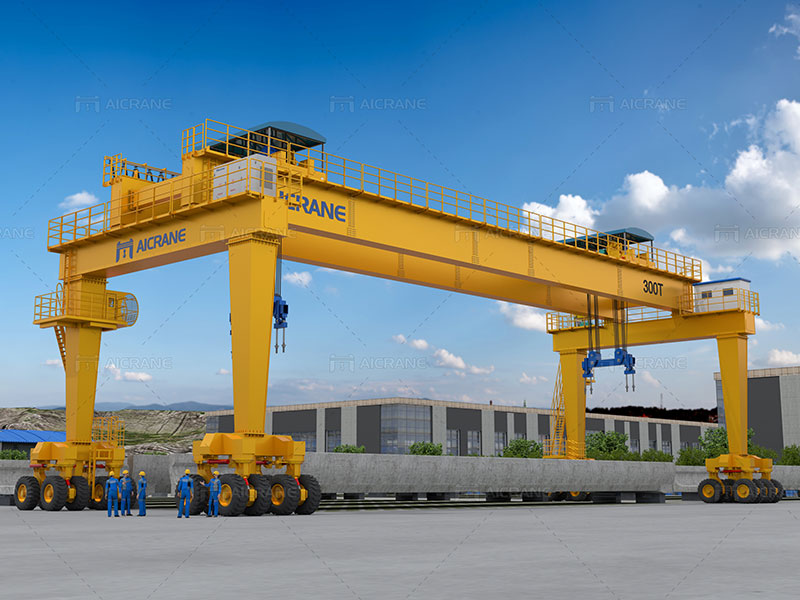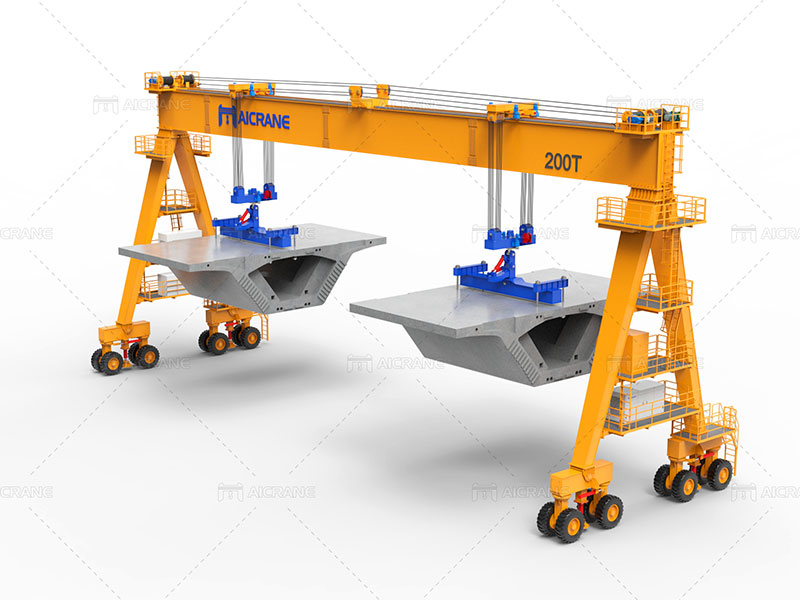In the world of container handling and port logistics, straddle carriers have emerged as indispensable workhorses. These remarkable machines efficiently transport containers within the terminal, contributing to the smooth flow of goods in and out of ports. To gain a deeper understanding of how straddle carriers operate, it’s essential to dissect their various components. In this article, we will explore the main components of a straddle carrier system, shedding light on the intricate machinery that powers these giants of the port industry.

Chassis
At the heart of every straddle carrier system lies its chassis—a sturdy, steel framework that forms the foundation of the entire machine. The chassis is designed to withstand substantial loads and the stresses of frequent movement. It supports all other components and ensures the stability and structural integrity of the straddle carrier.
Wheels and Tires
Straddle carriers are known for their distinctive feature—their large, rubber tires. These tires are specifically designed to distribute the immense weight of the machine and the cargo it carries. Straddle carriers typically have multiple sets of wheels, which can vary in number and configuration based on the specific model. The wheels are often powered by electric or diesel engines, allowing for both maneuverability and speed.
Spreader
The spreader is a critical component of a straddle carrier, as it is responsible for lifting, lowering, and securing containers. It is typically mounted beneath the straddle carrier’s chassis and can be hydraulically operated. The spreader arms can be adjusted to accommodate different container sizes and types, ensuring a secure grip during transport.
Cabin
The operator’s cabin is where the straddle carrier is controlled and monitored. It is usually located at a significant height above the chassis to provide clear visibility of the work area. The cabin is equipped with ergonomic controls, including steering, lifting, lowering, and spreading functions, along with instruments and displays to monitor the straddle carrier’s performance.
Engine
Straddle carriers are powered by either diesel or electric engines, depending on the model and application. Diesel engines offer higher torque and are well-suited for heavy-duty operations, while electric engines are more environmentally friendly and energy-efficient. The engine provides the necessary power to move the carrier, operate the spreader, and handle containers.
Hydraulic System
Hydraulics are at the core of straddle lift crane operations. They power the lifting and spreading functions of the spreader, allowing for precise control when handling containers. The hydraulic system is made up of pumps, valves, cylinders, and hoses that work in tandem to transfer fluid pressure into mechanical force.
Control System
Modern straddle carriers are equipped with advanced control systems that enhance efficiency, safety, and precision. These systems often incorporate sensors and cameras to provide real-time data to the operator, ensuring accurate container handling and preventing accidents. Additionally, control systems may include GPS and automation features to optimize route planning and container positioning.

Counterweight
Due to the height of the operator’s cabin and the heavy loads straddle carriers handle, they are equipped with counterweights. These weights are strategically positioned to maintain the machine’s balance and stability, especially when lifting and moving containers. Counterweights ensure that the straddle carrier remains upright and minimizes the risk of tipping over.
Fuel and Cooling Systems
For diesel-powered straddle carriers, a fuel system is essential to store and supply diesel fuel to the engine. Additionally, cooling systems are integrated to regulate the temperature of the engine, preventing overheating during prolonged operations. Proper cooling is vital to maintaining the engine’s efficiency and longevity.
Safety Features
Safety is paramount in the operation of straddle carriers. Various safety features are integrated into these machines, including:
a. Anti-collision Systems: Sensors and cameras detect obstacles, other vehicles, or personnel in the carrier’s path and trigger warnings or automatic braking to avoid accidents.
b. Load Monitoring: Load cells and sensors ensure that the carrier does not exceed its maximum load capacity, preventing overloading.
c. Emergency Stop Buttons: These buttons provide an immediate way for operators to halt all functions in case of an emergency.
d. Fire Suppression Systems: Straddle carriers often have fire suppression systems to extinguish any engine fires quickly.
e. Operator Training and Certification: Operators are trained and certified to operate straddle carriers safely and efficiently.
Conclusion
Straddle carriers are vital components of modern container terminals, enabling the efficient movement of cargo with precision and reliability. Each of the aforementioned components plays a critical role in the overall operation and functionality of these machines. From the robust chassis to the advanced control systems, the synergy of these components ensures that straddle carriers can handle the demands of container handling, contributing to the efficiency and productivity of ports and logistics operations worldwide. Understanding the intricacies of these components is essential for those involved in the maritime and logistics industries, as it allows for better decision-making, maintenance, and optimization of straddle carrier systems. For more information, visit https://steelmillcranes.com/